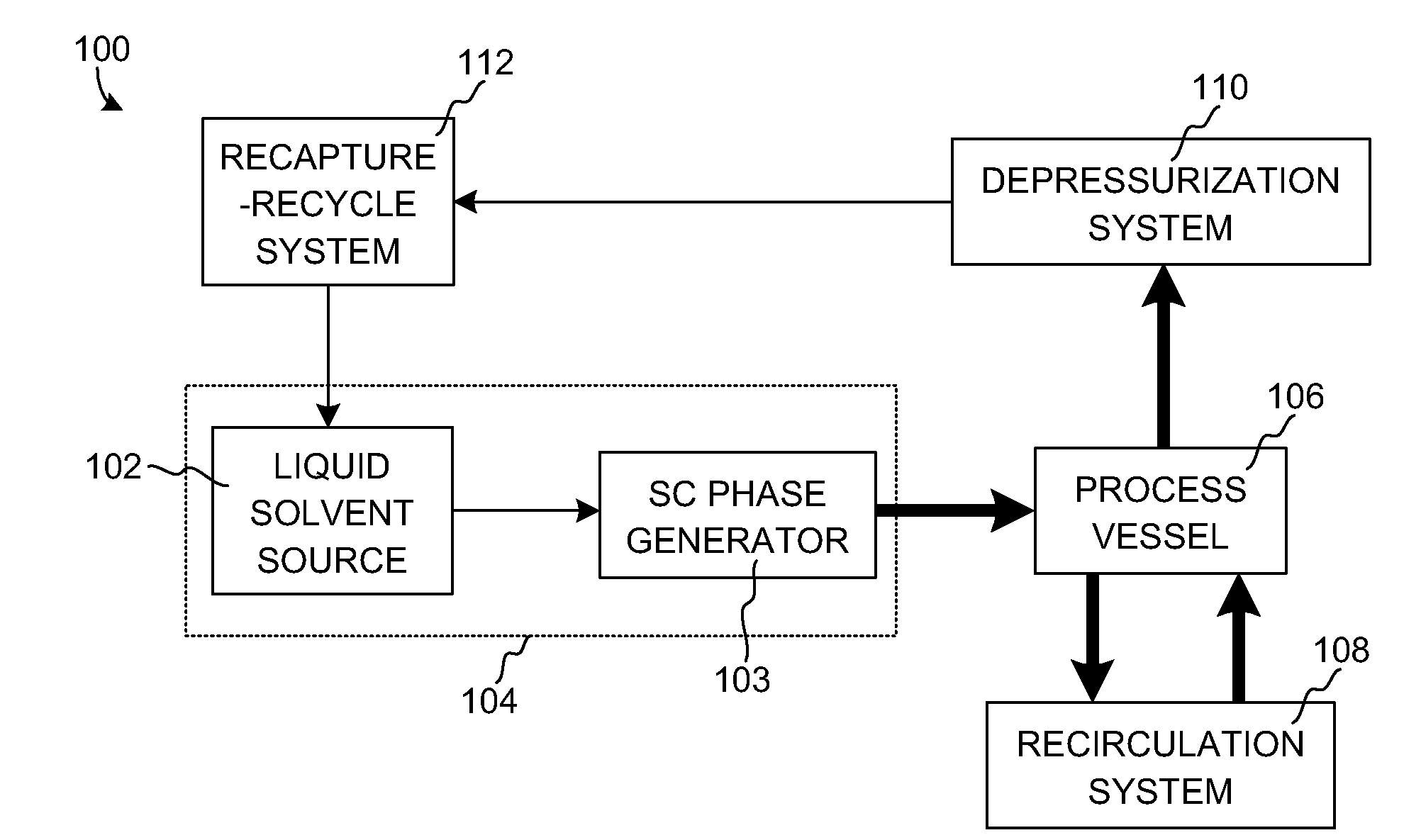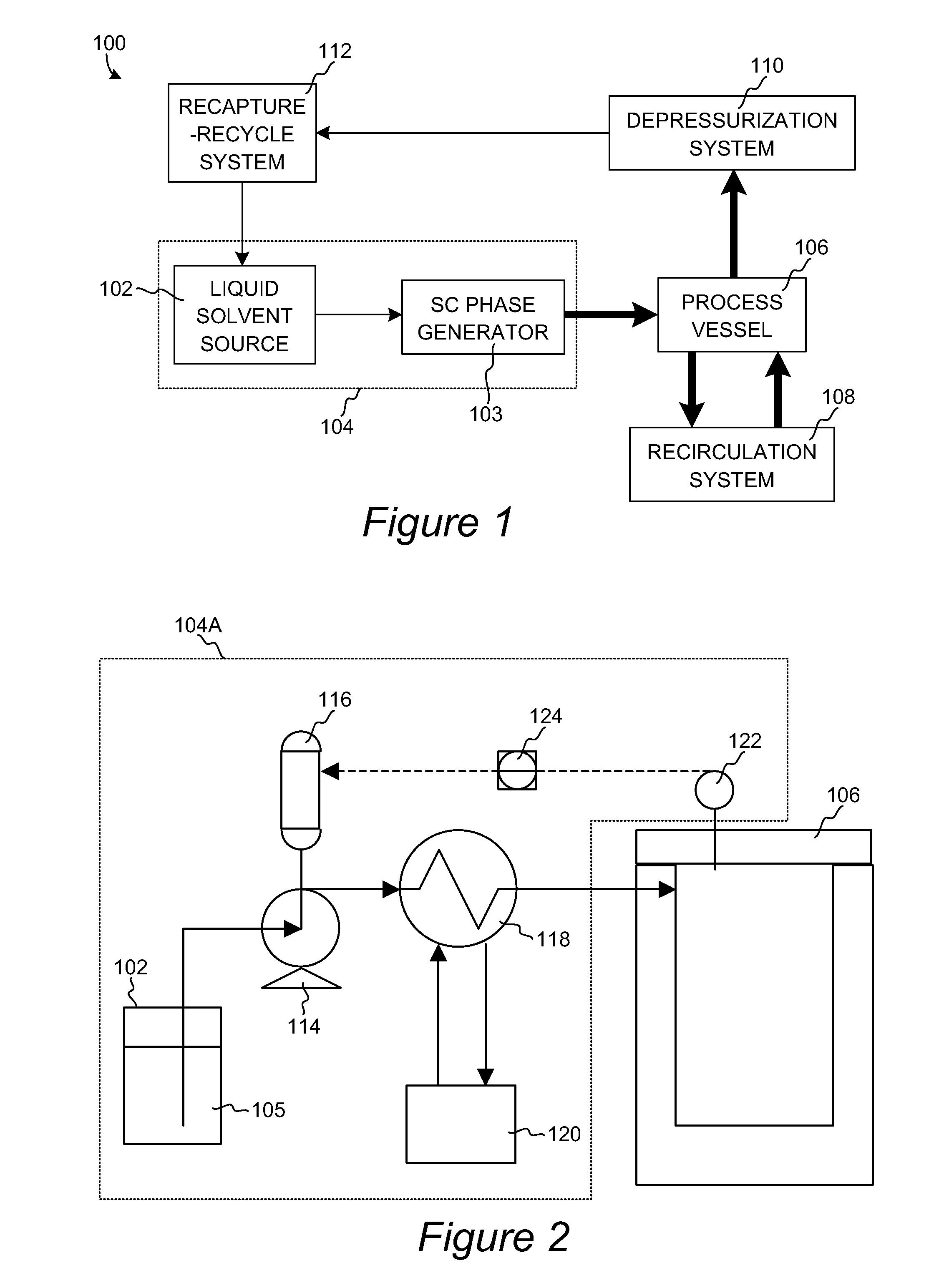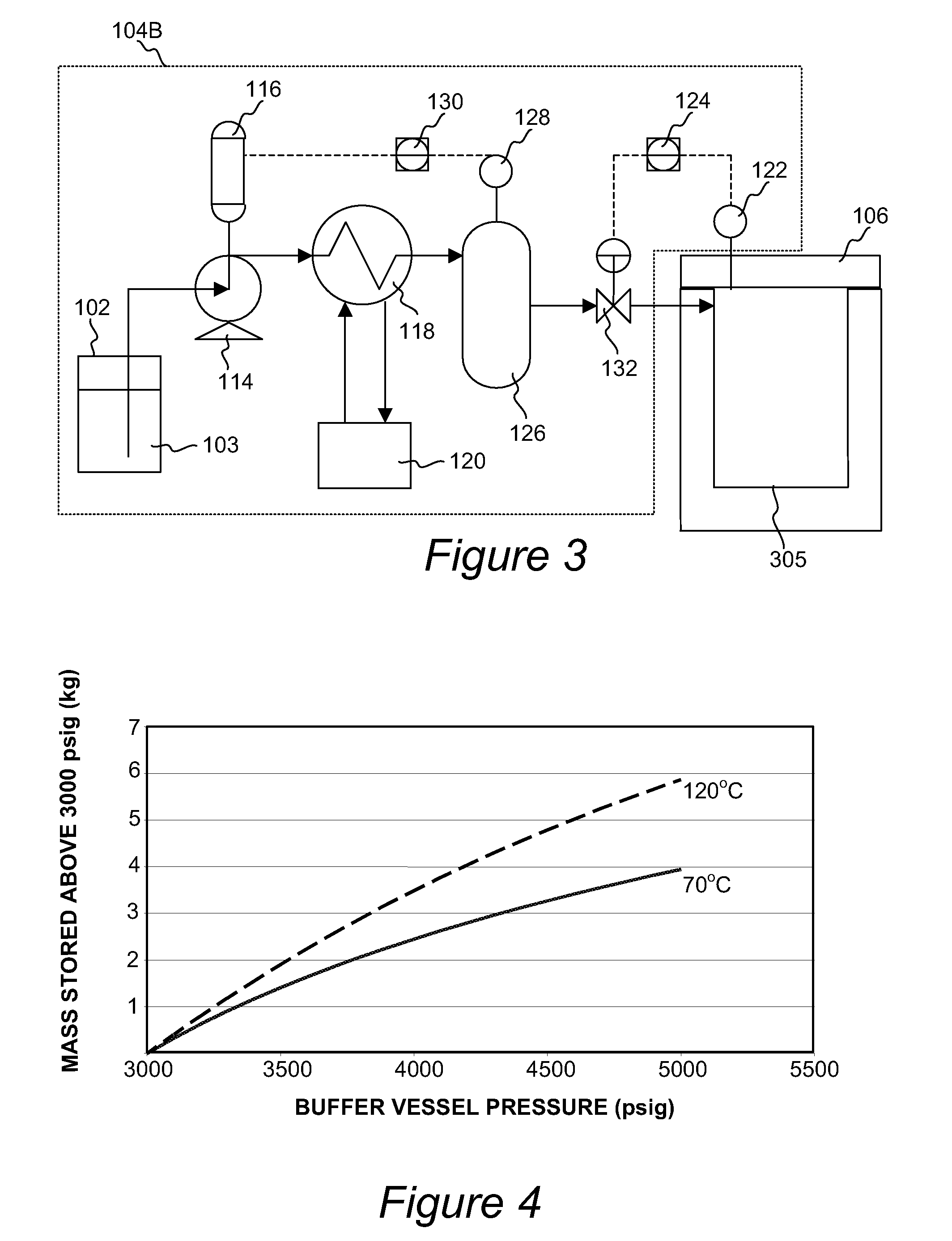Apparatus and methods for increasing the rate of solute concentration evolution in a supercritical process chamber
a supercritical process and solute concentration technology, applied in the direction of cleaning processes and apparatus, chemistry apparatus and processes, cleaning processes using liquids, etc., can solve the problems of presenting many engineering challenges, unable to be liquefied, and processes showing minimal selectivity for photoresist and post-etch residues
- Summary
- Abstract
- Description
- Claims
- Application Information
AI Technical Summary
Benefits of technology
Problems solved by technology
Method used
Image
Examples
Embodiment Construction
[0077]In the following detailed description of the present invention, numerous specific embodiments are set forth in order to provide a thorough understanding of the invention. However, as will be apparent to those skilled in the art, the present invention may be practiced without these specific details or by using alternate elements or processes. For example, while the invention is described principally in terms of cleaning contaminants from a wafer, the invention can also be used for depositing films or otherwise treating wafers with supercritical solvent media. In some descriptions herein, well-known processes, procedures, and components have not been described in detail so as not to unnecessarily obscure aspects of the present invention.
[0078]In this application, the term “wafer” is used extensively. The term “wafer” generally refers to a semiconductor wafer as such wafer exists during any of many stages of integrated circuit fabrication thereon. Preferably the invention is used...
PUM
| Property | Measurement | Unit |
|---|---|---|
| Time | aaaaa | aaaaa |
| Residence time | aaaaa | aaaaa |
| Temperature | aaaaa | aaaaa |
Abstract
Description
Claims
Application Information
 Login to View More
Login to View More - R&D
- Intellectual Property
- Life Sciences
- Materials
- Tech Scout
- Unparalleled Data Quality
- Higher Quality Content
- 60% Fewer Hallucinations
Browse by: Latest US Patents, China's latest patents, Technical Efficacy Thesaurus, Application Domain, Technology Topic, Popular Technical Reports.
© 2025 PatSnap. All rights reserved.Legal|Privacy policy|Modern Slavery Act Transparency Statement|Sitemap|About US| Contact US: help@patsnap.com



